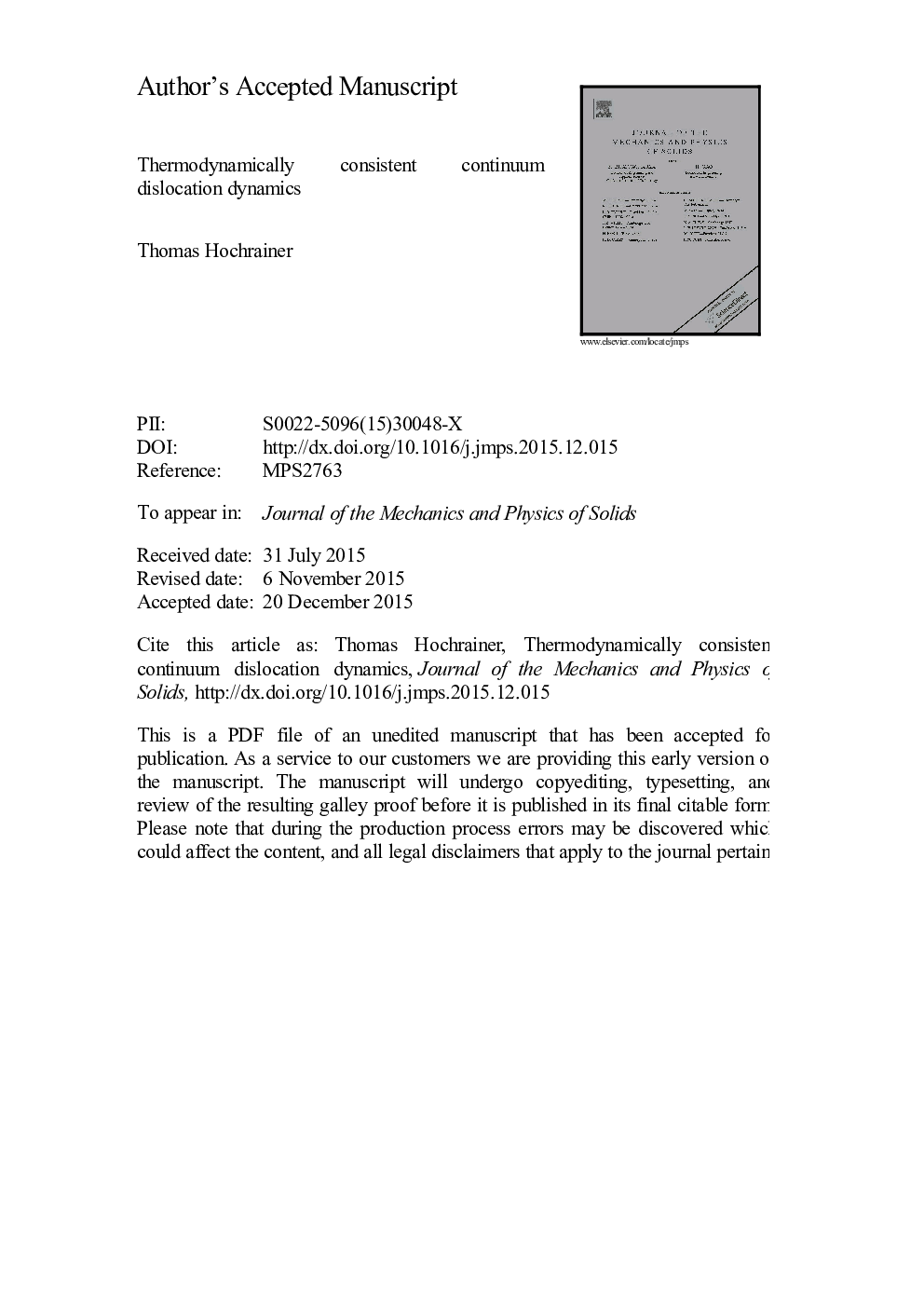| کد مقاله | کد نشریه | سال انتشار | مقاله انگلیسی | نسخه تمام متن |
|---|---|---|---|---|
| 7177825 | 1467055 | 2016 | 18 صفحه PDF | دانلود رایگان |
عنوان انگلیسی مقاله ISI
Thermodynamically consistent continuum dislocation dynamics
ترجمه فارسی عنوان
دینامیک جابجایی مستمر ترمودینامیکی
دانلود مقاله + سفارش ترجمه
دانلود مقاله ISI انگلیسی
رایگان برای ایرانیان
کلمات کلیدی
موضوعات مرتبط
مهندسی و علوم پایه
سایر رشته های مهندسی
مهندسی مکانیک
چکیده انگلیسی
Dislocation based modeling of plasticity is one of the central challenges at the crossover of materials science and continuum mechanics. Developing a continuum theory of dislocations requires the solution of two long standing problems: (i) to represent dislocation kinematics in terms of a reasonable number of variables and (ii) to derive averaged descriptions of the dislocation dynamics (i.e. material laws) in terms of these variables. The kinematic problem (i) was recently solved through the introduction of continuum dislocation dynamics (CDD), which provides kinematically consistent evolution equations of dislocation alignment tensors, presuming a given average dislocation velocity (Hochrainer, T., 2015, Multipole expansion of continuum dislocations dynamics in terms of alignment tensors. Philos. Mag. 95 (12), 1321-1367). In the current paper we demonstrate how a free energy formulation may be used to solve the dynamic closure problem (ii) in CDD. We do so exemplarily for the lowest order CDD variant for curved dislocations in a single slip situation. In this case, a thermodynamically consistent average dislocation velocity is found to comprise five mesoscopic shear stress contributions. For a postulated free energy expression we identify among these stress contributions a back-stress term and a line-tension term, both of which have already been postulated for CDD. A new stress contribution occurs which is missing in earlier CDD models including the statistical continuum theory of straight parallel edge dislocations (Groma, I., Csikor, F.F., Zaiser, M., 2003. Spatial correlations and higher-order gradient terms in a continuum description of dislocation dynamics. Acta Mater. 51, 1271-1281). Furthermore, two entirely new stress contributions arise from the curvature of dislocations.
ناشر
Database: Elsevier - ScienceDirect (ساینس دایرکت)
Journal: Journal of the Mechanics and Physics of Solids - Volume 88, March 2016, Pages 12-22
Journal: Journal of the Mechanics and Physics of Solids - Volume 88, March 2016, Pages 12-22
نویسندگان
Thomas Hochrainer,
